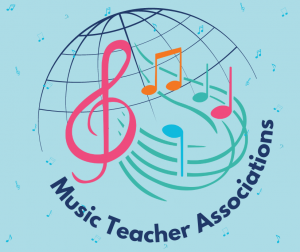 As a music teacher, it can be beneficial to join a professional organization that is specifically designed for music educators. Our comprehensive list of music teacher associations worldwide is organized by country, with separate listings for the United States broken down by state as well as national organizations like MTNA.
As a music teacher, it can be beneficial to join a professional organization that is specifically designed for music educators. Our comprehensive list of music teacher associations worldwide is organized by country, with separate listings for the United States broken down by state as well as national organizations like MTNA.
These music teacher organizations can offer numerous advantages, from providing access to resources and networking opportunities to offering professional development and advocacy for the field of music education. We will explore the benefits of joining a music teacher association, then show you the list of music teacher associations you can join.
Access to Resources
One of the primary benefits of joining a music teacher association is the access to a wealth of resources. Most organizations provide their members with access to teaching materials, research studies, and lesson plans that are tailored to the needs of music educators. These resources can help teachers stay up-to-date with the latest trends in music education, and can also provide inspiration and ideas for lesson planning.
Networking Opportunities
Another advantage of joining a music teacher association is the opportunity to network with other professionals in the field. Members can connect with other music educators, attend conferences, and participate in workshops and webinars. These events provide an opportunity to share ideas and experiences with colleagues, collaborate on projects, and gain insight into new teaching strategies.
Professional Development
Professional development is crucial for music educators to stay current in their field. Members gain access to professional development opportunities by joining a music teacher association that can help them improve their teaching skills and advance their careers. This can include music teacher workshops, music teacher conferences, and online courses for music teachers, which provide opportunities to learn from experts in the field and gain new knowledge and skills.
Advocacy for Music Education
Music teacher associations often advocate for music education on a national level. These organizations work to promote the importance of music education, secure funding for music programs, and influence policy decisions that affect music educators. Members joining a music teacher association can join a larger movement to support and advance music education.
Community
Lastly, joining a music teacher association provides a sense of community and belonging. Members can connect with others who share their passion for music education, and can find support and encouragement from colleagues. This can be especially valuable for teachers who work in isolated or rural areas, where opportunities for networking and collaboration may be limited.
National United States Music Teacher Associations Music Teacher Associations
Here’s a list of national music teacher associations in the United States. Note that some of these organizations may also have state-specific chapters or affiliates.
- American Choral Directors Association (ACDA): https://acda.org/
- American Orff-Schulwerk Association (AOSA): https://aosa.org/
- American String Teachers Association (ASTA): https://www.astastrings.org/
- Choristers Guild: http://www.choristersguild.org/
- College Music Society (CMS): https://www.music.org/
- International Association for Jazz Education (IAJE): https://jazzednet.org/
- Music Teachers National Association (MTNA): https://www.mtna.org/
- National Association for Music Education (NAfME): https://nafme.org/
- National Association of Teachers of Singing (NATS): https://www.nats.org/
- National Band Association (NBA): https://nationalbandassociation.org/
- National Guild for Community Arts Education: https://nationalguild.org/
- National Guild of Piano Teachers: http://pianoguild.com/
- Organization of American Kodály Educators (OAKE): https://oake.org/
- Percussive Arts Society (PAS): https://www.pas.org/
- Suzuki Association of the Americas (SAA): https://suzukiassociation.org/
General / Education
- National Association for Music Education: http://ww.nafme.org/
- International Association for Jazz Education: http://www.apassion4jazz.net/iaje.html
- National Association of Schools of Music: http://nasm.arts-accredit.org/
- Music Teachers National Association: http://www.mtna.org/
Elementary
- Organization of American Kodaly Educators: http://www.oake.org/default.aspx
- American Orff-Schulwerk Association: http://www.aosa2.org/
- Dalcroze Society of America: http://www.dalcrozeusa.org/
- Gordon Institute of Music Learning: http://www.giml.org/
- Suzuki Association of the Americas: http://suzukiassociation.org/
Vocal / Choral
- National Association of Teachers of Singing: http://www.nats.org/
- American Choral Directors Association: http://acda.org/
- Choristers Guild: http://www.choristersguild.org/
- National Opera Association: http://www.noa.org/
Band Directors
- National Bandmasters Association: http://www.nationalbandassociation.org/
- College Band Directors National Association: http://www.cbdna.org/
Instrumental
- American Guild of Organists: http://www.agohq.org/home.html
- Piano Technicians Guild: http://www.ptg.org
- Music Teacher National Association: http://www.mtna.org/
- The National Guild of Piano Teachers: http://pianoguild.com/
- American String Teacher Association: http://www.astaweb.com
- Violin Society of America: https://www.vsaweb.org/
- American Viola Society: http://americanviolasociety.org/
- Internet Cello Society: http://www.cello.org/
- International Society of Bassists: http://www.isbworldoffice.com/
- American Harp Society: http://www.harpsociety.org/
- The National Flute Association: http://www.nfaonline.org/
- International Double-Reed Society: http://www.idrs.org/
- International Clarinet Association: http://www.clarinet.org/
- International Saxophone: http://www.saxophone.org/
- International Trumpet Guild: http://www.trumpetguild.org/
- International Horn Society: http://www.hornsociety.org/
- International Trombone Association: http://www.trombone.net/
- International Tuba Euphonium Association: http://www.iteaonline.org
- Percussive Arts Society: http://www.pas.org/index.aspx
- Guitar Foundation of America: http://www.guitarfoundation.org
Theory / Composition
- Society for Music Theory: http://societymusictheory.org/
- American Composers Forum: http://www.composersforum.org/
- Broadcast Music International: http://www.bmi.com/
- International Computer Music Association: http://www.computermusic.org/
- Society of Composers, Inc.: http://www.societyofcomposers.org/
- American Society of Composers, Authors, & Publishers: http://www.ascap.com/
Technology
Sacred Music
- The Cyber Hymnal: http://www.cyberhymnal.org/
- Center for Church Music – Songs and Hymns: http://songsandhymns.org/
- Service Music: Music for Church Worship: http://www.servicemusic.org.uk
- Worship Resource Center: http://www.praise.net/
Music Teacher Associations in the United States Grouped by State
Alabama Music Teacher Associations
- Alabama Music Teachers Association (AMTA) – https://almta.org/
- Alabama Music Educators Association (AMEA): https://myamea.org/
- Alabama Music Industry Educators Association: https://alabamamusicindustryeducators.org/
- Baldwin County Music Teachers Association: https://baldwincountymusicteachers.com/
Alaska Music Teacher Associations
- Alaska Music Educators Association-https://www.alaskamea.org/
- Anchorage Keyboard Teachers Association: https://www.pianoakta.org/
Arizona Music Teacher Associations
- Arizona State Music Teachers Association: https://www.asmta.org/
- Arizona Music Educators Association: https://azmea.org/
- Desert Valley Music Teachers Association: https://www.dvmta.org/
- East Valley Music Teacher Association (EVMTA): https://evmta.org/
- Phoenix Music Teachers Association: https://phoenixmusicteachers.org/
- Tucson Music Teachers Association: https://www.tucsonmusicteachers.org/
Arkansas Music Teacher Associations
- Arkansas State Music Teachers Association: https://arkansasmta.org/
- Arkansas Music Educators Association: https://www.arkmea.org/
- Music Teachers Association of Central Arkansas: https://www.mtaca.org/
- Northwest Arkansas Music Teachers Association (NAMTA): https://nwamusicteachers.org/
California Music Teacher Associations
- Music Teachers’ Association of California (Pleasant Valley-Ventura Branch): https://www.pv-vcmtac.org/
- California Association of Professional Music Teachers (CAPMT) – https://www.capmt.org/
- Music Teachers Association of California (MTAC) – https://www.mtac.org/
- Central Coast Music Teachers Association: https://centralcoastmusic.org/
Colorado Music Teacher Associations
- Colorado State Music Teachers Association (CSMTA) – https://csmta.org/
- Music Teachers National Association Colorado (MTNA Colorado) – https://csmta.org/mtna-colorado/
- Pikes Peak Music Teachers Association (PPMTA): https://www.ppmta.org/become-a-member.html
Connecticut Music Teacher Associations
- Connecticut Music Educators Association (CMEA) – https://cmea.org/
- Connecticut State Music Teachers Association (CSMTA) – https://www.csmta.org/
- Fairfield Chapter of the Connecticut State Music Teachers Association: https://www.fairfieldcountymusicteachers.com/
- Hartford Chapter Connecticut Music Teacher Association CSMTA: https://hartfordchaptercsmta.wordpress.com/
- Hartford Music Teachers Alliance: http://hartfordmusicteachers.org/
- New Haven Chapter of the Connecticut Music Teachers Association: https://musicteachersnewhaven.com/
Delaware Music Teacher Associations
- Delaware Music Teachers Association: https://www.delawaremusicteachers.org/
- Delaware Music Educators Association: https://www.delawaremea.org/
Florida Music Teacher Associations
- Brevard Music Teachers Association: https://www.brevardmta.org/
- Broward County Music Teachers Association: http://bcmta.org/
- Central Florida Music Teachers Association: https://www.cfmta.net/
- Florida College Music Educators Association: https://www.fcmea.org/
- Florida State Music Teachers Association (FSMTA): https://www.fmta.org/
- Florida Music Education Association: https://fmea.org/
- Florida Vocal Association: https://fva.net/
- Gainesville Music Teachers Association: http://www.gainesvillemusicteachers.org/
- Miami Music Teachers Association: https://miamimta.org/
- Pensacola Music Teachers Association: http://www.pmta.info/
- Ridge Music Teachers Association: https://ridgemta.org/
- Southwest Florida Music Teachers Association (SWFMTA): https://www.swfmta.org/
- Tallahassee Music Teachers Association: https://www.tallahasseemta.org/
- Tampa Music Teachers Association (TMTA): https://www.tampamta.org/
Georgia Music Teacher Associations
- Georgia Music Teachers Association (GMTA): https://georgiamta.org/
- Georgia Music Educators Association: https://www.gmea.org/
Hawaii Music Teacher Associations
- Hawaii Music Teachers Association (HMTA) – https://hmta.org/
- Hawaii Music Educators Association: https://www.hawaiimea.org/
Idaho Music Teacher Associations
- Idaho Music Teachers Association: Bad Link
- Idaho Music Educators Association: https://www.idahomusiced.org/
- North Idaho Music Teachers Association: https://northidahomusicteachers.org/
- Treasure Valley Music Teachers Association: http://www.treasurevalleymta.org/
Illinois Music Teacher Associations
- Illinois State Music Teachers Association (ISMTA): https://www.ismta.org/
- Illinois Music Education Association: https://ilmea.org/
Indiana Music Teacher Associations
- Indiana Music Teachers Association (IMTA) – https://indmta.org/
- Indiana Music Educators Association: https://www.imeamusic.org/
Iowa Music Teacher Associations
- Iowa Music Teachers Association (IMTA) – https://iamta.org/
- Iowa Music Educators Association: https://www.iamea.org/
Kansas Music Teacher Associations
- Kansas Music Educators Association: https://www.ksmea.org/
- Kansas Music Teachers Association: https://www.ksmta.org/
- Wichita Metropolitan Music Teachers Association: https://www.wichitammta.org/
Louisiana Music Teacher Associations
- Louisiana Music Teachers Association: https://www.lmta.org/
- Louisiana Music Educators Association: https://www.lmeamusic.org/
- New Orleans Music Teachers Association: https://www.nomta.org/
Maine Music Teacher Associations
- Maine Music Educators Association: https://mainemmea.org/
- Maine Music Teachers Association: http://www.mainemta.org/
Maryland Music Teacher Associations
- Greater Columbia Music Teachers Association: https://gcmta.net/
- Maryland Music Educators Association: https://www.mmea-maryland.org/
- Maryland State Music Teachers Association: http://www.marylandmta.org/
Massachusetts Music Teacher Associations
- Massachusetts Music Educators Association: http://www.massmea.org/
- Massachusetts Music Teachers Association: https://www.mmta.net/
Michigan Music Teacher Associations
- Michigan Music Education Association: https://mmeamichigan.org/
- Michigan Music Teachers Association: https://michiganmusicteachers.org/
- Metropolitan Detroit Musicians League: http://mdmlonline.org/
Minnesota Music Teacher Associations
- Minnesota Music Educators Association: https://www.mmea.org/
- Minnesota Music Teachers Association: https://www.mnmusicteachers.com/
Mississippi Music Teacher Associations
- Mississippi Music Educators Association: https://www.msmea.org/
- Mississippi Music Teachers Association: https://msmusicteachers.org/
Missouri Music Teacher Associations
- Kansas City Music Teachers Association: https://kansascitymta.org/
- Missouri Music Educators Association: https://mmea.net/
- Missouri Music Teachers Association: https://missourimta.org/
- St. Louis Area Music Teachers Association: https://www.slamta.org/
Montana Music Teacher Associations
- Montana Music Educators Association: https://mtmusiced.com/
- Montana State Music Teachers Association: https://www.montanamta.org/
Nebraska Music Teacher Associations
- Nebraska Music Education Association: https://nmeanebraska.org/
- Nebraska Music Teachers Association: https://nebmta.org/
Nevada Music Teacher Associations
- Nevada Music Teachers Association: https://www.nvmta.com/
- Nevada Music Educators Association: https://www.nmeamusic.org/
New Hampshire Music Teacher Associations
- New Hampshire Music Teachers Association: New Hampshire Music Teachers Association: https://www.nhmta.net/
- New Hampshire Music Educators Association: https://www.nhmea.org/
New Jersey Music Teacher Associations
- New Jersey Music Educators Association: https://www.njmea.org/
- Music Teachers National Association – New Jersey: https://njmta.com/
New Mexico Music Teacher Associations
- New Mexico Music Educators Association: https://www.nmmea.com/
- The Professional Music Teachers of New Mexico: https://pmtnm.net/
New York Music Teacher Associations
- New York State School Music Association: https://www.nyssma.org/
- Westchester County Music Teachers Guild: http://westchestermusiciansguild.com/
North Carolina Music Teacher Associations
- North Carolina Music Educators Association: https://www.ncmea.net/
- North Carolina Music Teachers Association: https://www.ncmta.org/
North Dakota Music Teacher Associations
- North Dakota Music Educators Association: https://www.ndmea.org/
- North Dakota Music Teachers Association: https://ndmta.org/
Ohio Music Teacher Associations
- Central East District of the Ohio Music Teachers Association: https://www.ceomta.org/
- Ohio Music Education Association: https://www.omea-ohio.org/
- Ohio Music Teachers Association: https://ohiomta.org/
- Western Reserve Music Teachers Association: https://wrmta.weebly.com/
Oklahoma Music Teacher Associations
- Oklahoma Music Educators Association: https://www.okmea.org/
- Oklahoma Music Teachers Association: https://www.oklahomamta.org/
- Tulsa Accredited Music Teachers Association: https://www.tamta.org/
Oregon Music Teacher Associations
- Oregon Music Education Association: https://www.oregonmusic.org/
- Oregon Music Teachers Association: https://oregonmta.org/
Pennsylvania Music Teacher Associations
- Pennsylvania Music Educators Association: https://www.pmea.net/
- Pennsylvania Music Teachers Association: https://www.pamusicteachers.org/
- Willow Grove Chapter of Pennsylvania Music Teachers Association: https://www.willowgrovemusicteachers.org/
Rhode Island Music Teacher Associations
South Carolina Music Teacher Associations
- South Carolina Music Educators Association: https://www.scmea.net/
- South Carolina Music Teachers Association: https://www.scmta.org/
South Dakota Music Teacher Associations
- South Dakota Music Education Association: https://www.sdmea.net/
- South Dakota Music Teachers Association: http://www.sdmta.org/
Tennessee Music Teacher Associations
- Middle Tennessee Vocal Association: http://www.mtva.org/
- Middle Tennessee American Orff-Schulwerk Association: http://www.mtaosa.org/
- Middle Tennessee General Music Educators Association: http://www.mtgmea.org/index.html
- Tennessee Music Education Association: https://www.tnmea.org/
- Tennessee Music Teachers Association: https://www.tnmta.org/
Texas Music Teacher Associations
- Texas Music Educators Association: https://www.tmea.org/
- Texas Music Teachers Association: https://www.tmta.org/
- Houston Music Teachers Association: https://www.houstonmusicteachersassociation.com/
Utah Music Teacher Associations
- Utah Music Educators Association: https://umea.us/
- Utah Music Teachers Association: https://utahmta.org/
Vermont Music Teacher Associations
- Vermont Music Educators Association: https://www.vmea.org/
- Vermont Music Teachers Association: https://www.vermontmta.net/
Virginia Music Teacher Associations
- Charlottesville Music Teachers Association – http://www.cvillemta.com/
- Northern Virginia Music Teachers Association: https://www.nvmta.org/
- Virginia Music Educators Association: https://www.vmea.com/
- Virginia Music Teachers Association: https://www.music-usa.org/vmta/
Washington Music Teacher Associations
- Washington Music Educators Association: https://wmea.org/
- Washington State Music Teachers Association: https://www.wsmta.org/
West Virginia Music Teacher Associations
- West Virginia Music Educators Association: https://wvmea.org/
- West Virginia Music Teachers Association: https://wvmta.org/
Wisconsin Music Teacher Associations
- Michibago Music Teachers Association: https://www.mmtawisconsin.org/
- Wisconsin Music Educators Association: https://wmeamusic.org/
- Wisconsin Music Teachers Association: https://www.wisconsinmusicteachers.com/
- Milwaukee Music Teachers Association: https://www.milwaukeemusicteachersassociation.org/
Wyoming Music Teacher Associations
- Wyoming Music Educators Association: https://wyomea.org/
- Wyoming Music Teachers Association: https://wyomingmta.org/
Afghanistan
Albania
- European Piano Teachers Association / Albania – https://epta-europe.org/content/epta-albania
- Association Européenne des Conservatoires/Albania-https://aec-music.eu/members/national-overviews/albania/
- European association for music in schools-https://eas-music.org/countries/albania/
Algeria
Nothing
Andorra
Nothing
Angola
Nothing
Antigua and Barbuda
Nothing
Argentina
- World Piano Teachers Association / Argentina – http://www.wpta.info/argentina/
- International Association of Schools of Jazz: https://www.iasj.com/argentina
Armenia
- European Piano Teachers Association / Armenia – https://epta-europe.org/content/epta-armenia
- World Piano Teachers Association / Armenia – http://www.wpta.info/armenia/
- Association Européenne des Conservatoires/Armenia-https://aec-music.eu/members/national-overviews/armenia/
Australia
- Music Teachers’ Association of NSW: https://www.mtansw.org.au/
- World Piano Teachers Association / Australia – http://www.wpta.info/australia/
- Australian Society for Music Education-https://www.asme.edu.au
- Music Teachers’ Association of NSW-https://www.mtansw.org.au
- Queensland Music Teachers Association-https://www.qmta.org.au
- Music Teachers Association of South Australia (MTASA)-https://mtasa.com.au
- aMuse-https://www.amuse.vic.edu.au/index.php
- WA Music Teachers Association / Australia – http://www.musicteacherswa.org.au/index.php
Austria
- European Piano Teachers Association / Austria – https://epta-europe.org/content/epta-austria
- European association for music in schools-https://eas-music.org/countries/austria/
- European Music School Union / Austria – https://www.musicschoolunion.eu/members/austria/
Azerbaijan
Bahamas
Bahrain
Nothing found
Bangladesh
Nothing Found
Barbados
Nothing found
Belarus
Belgium
- European Piano Teachers Association / Belgium Brussels- https://epta-europe.org/content/epta-belgium-flanders-brussels
- European Piano Teachers Association / Belgium Bruxelles – https://epta-europe.org/content/epta-belgium-wallonie-bruxelles
- European association for music in schools-https://eas-music.org/countries/belgium/
- European Music School Union / Belgium – https://www.musicschoolunion.eu/members/belgium/
- World Piano Teachers Association / Belgium – http://www.wpta.info/belgium/
Belize
Nothing found
Benin
nothing found
Bhutan
nothing
Bolivia
Bosnia and Herzegovina
- Association Européenne des Conservatoires/Bosnia and Herzegovina-https://aec-music.eu/members/national-overviews/bosnia-and-herzegovina/
- European association for music in schools / Bosnia and Herzegovina – http://eas-music.org/bosnia-and-herzegovina/
Botswana
nothing
Brazil
- World Piano Teachers Association / Brazil – http://www.wpta.info/brazil/
- ABEM (Associação Brasileira de Educação Musical): http://www.abemeducacaomusical.com.br/
Brunei
nothing
Bulgaria
Burkina Faso
nothing
Burundi
nothing
Côte d’Ivoire
nothing
Cabo Verde
nothing
Cambodia
Cameroon
nothing
Canada
- British Columbia Registered Music Teachers’ Association: https://bcrmta.bc.ca/
- Canada Federation of Music Teachers’ Association: https://www.cfmta.org/en/
- World Piano Teachers Association / Canada – http://www.wpta.info/canada/
- Canadian Music Educators Association / Canada – https://cmea.ca/en/
- New Brunswick Registered Music Teachers’ Association: https://www.nbrmta.com/
- Ontario Registered Music Teachers’ Association: https://www.ormta.org/
- Ontario Music Educators’ Association: https://omea.on.ca/
- Quebec Music Teachers’ Association: https://www.apmqmta.org/en-ca/
- Association des professeurs de musique du Québec (APMQ): https://www.apmqmta.org/fr-ca/
Central African Republic
nothing
Chad
nothing
Czech Republic
- Association Européenne des Conservatoires/-https://aec-music.eu/members/national-overviews/bosnia-and-herzegovina/
- European Music School Union / Czech Republic – https://www.musicschoolunion.eu/members/czech-republic/
Chile
nothing
China
Colombia
Teaching Artists International / Colombia – https://www.taimusic.org/colombia-fellowship
Comoros
nothing
Congo (Congo-Brazzaville)
nothing
Costa Rica
Croatia
- Croatian Association of Music Theorists – CAMT: http://hdgt.hr/english/
- European Piano Teachers Association / Croatia – https://epta-croatia.hr/en/
- World Piano Teachers Association / Croatia – http://www.wpta.info/croatia/
- European Association for Music in Schools / Croatia – https://eas-music.org/countries/croatia/
Cuba
World Piano Teachers Association / Cuba – http://www.wpta.info/cuba/
Cyprus
European association for music in schools / Cyprus – http://eas-music.org/countries/cyprus/
European Music School Union / Cyprus – https://www.musicschoolunion.eu/members/cyprus/
Czechia (Czech Republic)
European Piano Teachers Association / Czech Republic – https://epta-europe.org/content/epta-czech-republic
European association for music in schools / Czechia – https://eas-music.org/czech-republic/
Democratic Republic of the Congo
Denmark
European Piano Teachers Association / Denmark – https://epta-europe.org/content/epta-denmark
European Music School Union / Denmark – https://www.musicschoolunion.eu/members/denmark/
Djibouti
nothing
Dominica
nothing
Dominican Republic
nothing
Ecuador
nothing
Egypt
nothing
El Salvador
nothing
Equatorial Guinea
nothing
Eritrea
nothing
Estonia
European Piano Teachers Association / Estonia – https://epta-europe.org/content/epta-estonia
World Piano Teachers Association / Estonia – http://www.wpta.info/estonia/
European association for music in schools / Estonia – https://eas-music.org/countries/estonia/
European Music School Union / Estonia – https://www.musicschoolunion.eu/members/estonia/
Eswatini (fmr. “Swaziland”)
Teaching Artists International / Eswatini – https://www.taimusic.org/eswatini
Ethiopia
nothing
Fiji
nothing
Finland
European Piano Teachers Association / Finland – https://epta-europe.org/content/epta-finland
World Piano Teachers Association / Finland – http://www.wpta.info/finland/
European association for music in schools / Finland – https://eas-music.org/countries/finland/
European Music School Union / Finland – https://www.musicschoolunion.eu/members/finland/
France
European Piano Teachers Association / France – https://epta-europe.org/content/epta-france
World Piano Teachers Association / France – http://www.wpta.info/france/
Association Européenne des Conservatoires/ France – https://aec-music.eu/members/national-overviews/france/
European Music School Union / France – https://www.musicschoolunion.eu/members/france/
European association for music in schools / France – https://eas-music.org/countries/france/
Gabon
nothing
Gambia
nothing
Georgia
European Piano Teachers Association / Georgia – https://epta-europe.org/content/epta-georgia
World Piano Teachers Association / Georgia – http://www.wpta.info/georgia/
Association Européenne des Conservatoires / Georgia – https://aec-music.eu/members/national-overviews/georgia/
Germany
European Piano Teachers Association / Germany – https://epta-europe.org/content/epta-germany
Association Européenne des Conservatoires/ Germany – https://aec-music.eu/members/national-overviews/germany/
World Piano Teachers Association / Germany – http://www.wpta.info/germany/
European Music School Union / Germany – https://www.musicschoolunion.eu/members/germany/
European association for music in schools / Germany – https://eas-music.org/germany/
Ghana
have one but cant find the website
Greece
European Piano Teachers Association / Greece – https://epta-europe.org/content/epta-greece
Greek Association of Primary Music Education Teacher / Greece – http://maths.emportfolio.eu/index.php/partners/greek-association-of-primary-music-education-teachers-gapmet
European association for music in schools / Greece – https://eas-music.org/countries/greece/
Grenada
nothing
Guatemala
nothing
Guinea
nothing
Guinea-Bissau
nothing
Guyana
have one cant find a website
Haiti
nothing
Holy See
nothing
Honduras
nothing
Hungary
European Piano Teachers Association / Hungary – https://epta-europe.org/content/epta-hungary
Association Européenne des Conservatoires / Hungary – https://aec-music.eu/members/national-overviews/hungary/
European Music School Union / Hungary – https://www.musicschoolunion.eu/members/hungary/
European association for music in schools / Hungary – https://eas-music.org/countries/hungary/
Iceland
European Piano Teachers Association / Iceland – https://epta-europe.org/content/epta-iceland
Association Européenne des Conservatoires/ Iceland – https://aec-music.eu/members/national-overviews/iceland/
European Music School Union / Iceland – https://www.musicschoolunion.eu/members/iceland/
India
Western Music Education Association / India – https://wmea.in/
Indonesia
World Piano Teachers Association / Indonesia – http://www.wpta.info/indonesia/
Suzuki Music Teachers Association of Indonesia / Indonesia – https://suzukimusicindonesia.org/
Iran
nothing
Iraq
nothing
Ireland
European Piano Teachers Association / Ireland – https://epta-europe.org/content/epta-ireland
World Piano Teachers Association / Ireland – http://www.wpta.info/ireland/
Association Européenne des Conservatoires / Ireland – https://aec-music.eu/members/national-overviews/ireland/
Post Primary Music Teachers Association / Ireland – http://ppmta.ie/
European association for music in schools / Ireland – https://eas-music.org/countries/ireland/
Israel
World Piano Teachers Association / Israel – http://www.wpta.info/israel/
Association Européenne des Conservatoires / Israle – https://aec-music.eu/members/national-overviews/israel/
Italy
European Piano Teachers Association / Italy – https://epta-europe.org/content/epta-italy
Association Européenne des Conservatoires / Italy – https://aec-music.eu/members/national-overviews/italy/
European Music School Union / Italy – https://www.musicschoolunion.eu/members/italy/
World Piano Teachers Association / Italy – https://www.wpta.info/italy/
European association for music in schools / Italy – https://eas-music.org/countries/italy/
Jamaica
nothing
Japan
World Piano Teachers Association / Japan – http://www.wpta.info/japan/
Japan Piano Teachers Association / Japan – https://epta-europe.org/content/jpta-japan-piano-teachers-association
Jordan
nothing
Kazakhstan
Association of Teachers of English North Kazakhstan / Kazakhstan – https://www.atenk.kz/en/
Kenya
nothing
Kiribati
nothing
Kuwait
nothing
Kyrgyzstan
nothing
Laos
nothing
Latvia
European Piano Teachers Association / Latvia – https://epta-europe.org/content/epta-latvia
Association Européenne des Conservatoires/ Latvia – https://aec-music.eu/members/national-overviews/latvia/
European Music School Union / Latvia – https://www.musicschoolunion.eu/members/latvia/
European association for music in schools / Latvia – https://eas-music.org/latvia/
Lebanon
Lancaster-Lebanon Music Educators Association / Lebanon – http://www.llmea.org/
Association Européenne des Conservatoires/ Lebanon – https://aec-music.eu/members/national-overviews/lebanon/
Lesotho
nothing
Liberia
The Agape National Academy of Music / Liberia – https://www.anamliberia.org/
Libya
nothing
Liechtenstein
European Music School Union / Liechtenstein – https://www.musicschoolunion.eu/members/liechtenstein/
Lithuania
European Piano Teachers Association / Lithuania – https://epta-europe.org/content/epta-lithuania
Lithuanian Music Teachers Association / Lithuania – http://www.lmma.eu/en/home/
Association Européenne des Conservatoires / Lithuania – https://aec-music.eu/members/national-overviews/lithuania/
European association for music in schools / Lithuania – https://eas-music.org/countries/lithuania/
Luxembourg
Association Européenne des Conservatoires / Luxembourg – https://aec-music.eu/members/national-overviews/luxembourg/
European Music School Union / Luxembourg – https://www.musicschoolunion.eu/members/luxembourg/
European association for music in schools / Luxembourg – https://eas-music.org/countries/luxembourg/
Madagascar
nothing
Malawi
nothing
Malaysia
World Piano Teachers Association / Malaysia – http://www.wpta.info/malaysia/
Malaysian Association for Music Education / Malaysia – https://www.mamebaru.org/
Maldives
nothing
Mali
nothing
Malta
European Piano Teachers Association / Malta – https://epta-europe.org/content/epta-malta
Marshall Islands
nothing
Mauritania
nothing
Mauritius
nothing
Mexico
World Piano Teachers Association / Mexico – http://www.wpta.info/mexico/
Micronesia
nothing
Moldova
nothing
Monaco
nothing
Mongolia
nothing
Montenegro
European association for music in schools / Montenegro – https://eas-music.org/countries/montenegro/
Morocco
nothing
Mozambique
nothing
Myanmar (formerly Burma)
Mynanmar Music Association / Myanmar – https://www.facebook.com/myanmarmusicassociation
Namibia
nothing
Nauru
nothing
Nepal
nothing
Netherlands
European Piano Teachers Association / Netherlands – https://epta-europe.org/content/epta-netherlands
Association Européenne des Conservatoires / The Netherlands – https://aec-music.eu/members/national-overviews/the-netherlands/
World Piano Teachers Association / Netherlands – http://www.wpta.info/netherlands/
European Music School Union / Netherlands – https://www.musicschoolunion.eu/members/the-netherlands/
European association for music in schools / The Netherlands – https://eas-music.org/countries/the-netherlands/
New Zealand
The New Zealand Association of Teachers of Singing Inc. / New Zealand – https://www.newzats.org.nz/
Christchurch & Westland Secondary Music Teachers’ Association / New Zealand – https://cwsmta.org/
Nicaragua
nothing
Niger
nothing
Nigeria
Music Educators Association of Nigeria / Nigeria – https://www.facebook.com/groups/541994922629408?locale=nb_NO
North Korea
just gonna go ahead and skip this one
North Macedonia
Association Européenne des Conservatoires / Macedonia – https://aec-music.eu/members/national-overviews/macedonia
European association for music in schools / North Macedonia – https://eas-music.org/countries/countries-macedonia/
Norway
European Piano Teachers Association / Norway – https://epta-europe.org/content/epta-norway
European association for music in schools / Norway – https://eas-music.org/countries/norway/
European Music School Union / Norway – https://www.musicschoolunion.eu/members/norway/
Oman
nothing
Pakistan
Pakistan Music Teachers Association / Pakistan – https://www.facebook.com/groups/1457397667834405
Palau
nothing
Palestine State
nothing
Panama
nothing
Papua New Guinea
nothing
Paraguay
nothing
Peru
Teaching Artists International / Peru – https://www.taimusic.org/peru
World Piano Teachers Association / Peru – http://www.wpta.info/peru/
Philippines
nothing
Poland
European Piano Teachers Association / Poland – https://epta-europe.org/content/epta-poland
Paderewski Music Association / Poland – https://paderewskicompetition.pl/
Association Européenne des Conservatoires / Poland – https://aec-music.eu/members/national-overviews/poland/
World Piano Teachers Association / Poland – http://www.wpta.info/poland/
European Music School Union / Poland – https://www.musicschoolunion.eu/members/poland/
European association for music in schools / Poland – https://eas-music.org/countries/poland/
Portugal
European Piano Teachers Association / Portugal – https://epta-europe.org/content/epta-portugal
Portugal European Piano Teachers Association / Portugal – https://epta-portugal.com/en/
European association for music in schools / Portugal – https://eas-music.org/countries/portugal/
World Piano Teachers Association / Portugal – http://www.wpta.info/portugal/
Qatar
nothing
Romania
World Piano Teachers Association / Romania – http://www.wpta.info/romania/
Association Européenne des Conservatoires / Romania – https://aec-music.eu/members/national-overviews/romania/
Russia
European Piano Teachers Association / Russia – https://epta-europe.org/content/epta-russia
World Piano Teachers Association / Russia – http://www.wpta.info/russia/
Rwanda
nothing
Saint Kitts and Nevis
nothing
Saint Lucia
nothing
Saint Vincent and the Grenadines
nothing
Samoa
nothing
San Marino
has one, cant find website
Sao Tome and Principe
nothing
Saudi Arabia
nothing
Senegal
nothing
Serbia
European Piano Teachers Association / Serbia – https://epta-europe.org/content/epta-serbia
European association for music in schools / Serbia – https://eas-music.org/countries/serbia/
Association Européenne des Conservatoires / Serbia – https://aec-music.eu/members/national-overviews/serbia/
European Music School Union / Serbia – https://www.musicschoolunion.eu/members/serbia/
Seychelles
nothing
Sierra Leone
nothing
Singapore
Singapore Music Teachers Association / Singapore – https://www.smtasingapore.com/
World Piano Teachers Association / Singapore – http://www.wpta.info/singapore/
Slovakia
European association for music in schools / Slovakia – https://eas-music.org/slovakia/
European Music School Union / Slovakia – https://www.musicschoolunion.eu/members/slovakia/
Slovenia
European Piano Teachers Association / Slovenia – https://epta-europe.org/content/epta-slovenia
World Piano Teachers Association / Slovenia – http://www.wpta.info/slovenia/
European association for music in schools / Slovenia – https://eas-music.org/countries/slovenia/
Association Européenne des Conservatoires/ Slovenia – https://aec-music.eu/members/national-overviews/slovenia/
European Music School Union / Slovenia – https://www.musicschoolunion.eu/members/slovenia/
Slovenian Voice Teachers Association / Slovenia – https://dspp.si/
Solomon Islands
Piano Association of Solomon Islands, no website
Somalia
nothing
South Africa
Music Teachers Association of South Africa / South Africa – https://m.facebook.com/Music-Teachers-association-of-South-Africa-448072008859178/
The South African Society’s of Music Teachers / South Africa – https://sasmt-savmo.co.za/
World Piano Teachers Association / South Africa – http://www.wpta.info/southafrica/
South Korea
Korea International Music Educators Association / South Korea – https://www.kimeaonline.org/
World Piano Teachers Association / South Korea – http://www.wpta.info/southkorea/
South Sudan
nothing
Spain
European Piano Teachers Association / Spain – https://epta-europe.org/content/epta-spain
World Piano Teachers Association / Spain – http://www.wpta.info/spain/
European association for music in schools / Spain – https://eas-music.org/spain/
Association Européenne des Conservatoires/ Spain – https://aec-music.eu/members/national-overviews/spain/
European Music School Union / Spain – https://www.musicschoolunion.eu/members/spain/
Sri Lanka
nothing
Sudan
nothing
Suriname
nothing
Sweden
European Piano Teachers Association / Sweden – https://epta-europe.org/content/epta-sweden
European association for music in schools / Sweden – https://eas-music.org/sweden/
Association Européenne des Conservatoires / Sweden – https://aec-music.eu/members/national-overviews/sweden/
European Music School Union / Sweden – https://www.musicschoolunion.eu/members/sweden/
Switzerland
European Piano Teachers Association / Switzerland – https://epta-europe.org/content/epta-switzerland
World Piano Teachers Association / Switzerland – http://www.wpta.info/switzerland/
European association for music in schools / Switzerland – https://eas-music.org/switzerland/
Association Européenne des Conservatoires / Switzerland – https://aec-music.eu/members/national-overviews/switzerland/
European Music School Union / Switzerland – https://www.musicschoolunion.eu/members/switzerland/
Syria
nothing
Tajikistan
nothing
Tanzania
nothing
Thailand
World Piano Teachers Association / Thailand – http://www.wpta.info/thailand/
Timor-Leste
nothing
Togo
nothing
Tonga
nothing
Trinidad and Tobago
nothing
Tunisia
nothing
Turkey
World Piano Teachers Association / Turkey – http://www.wpta.info/turkey/
European association for music in schools / Turkey – https://eas-music.org/countries/turkey/
Turkmenistan
nothing
Tuvalu
nothing
Uganda
nothing
Ukraine
European association for music in schools / Ukraine – https://eas-music.org/countries/ukraine/
United Arab Emirates
nothing
United Kingdom
European Piano Teachers Association / United Kingdom – https://epta-europe.org/content/epta-united-kigdom
World Piano Teachers Association / United Kingdom – http://www.wpta.info/uk/
European association for music in schools / United Kingdom – https://eas-music.org/countries/united-kingdom/
Association Européenne des Conservatoires/ United Kingdom – https://aec-music.eu/members/national-overviews/united-kingdom/
United States of America
World Piano Teachers Association / United States of America – http://www.wpta.info/usa/
Uruguay
has one cant find website
Uzbekistan
nothing
Vanuatu
nothing
Venezuela
nothing
Vietnam
nothing
Yemen
nothing
Zambia
Zambia Music Educators Association / Zambia – https://www.facebook.com/groups/246242082142259
Zimbabwe
has one. dont have a website
A
- American Choral Directors Association: https://acda.org/
- American Orff-Schulwerk Association: https://aosa.org/
- American String Teachers Association: https://www.astastrings.org/
- Association of Texas Small School Bands: https://www.atssb.org/
- Australian Music Examinations Board: https://www.ameb.edu.au/
- Australian Youth Orchestra: https://ayo.com.au/
B
C
D
- Dartington International Summer School
- Dublin International Piano Festival
E
- Education Through Music-Los Angeles
- El Sistema Sweden National Orchestra
- European Association of Conservatoires
F
- Florida Association of Band Directors
- Flute circle
- Forum Thomanum
G
- Golandsky Institute
- Greek Youth Symphony Orchestra
- Guitars in the Classroom
I
- Independent Society of Musicians
- International Association for Jazz Education
- International Society for Music Education
- International Society for Philosophy of Music Education
J
- Junge Deutsche Philharmonie
K
- Al Kamandjâti
- Keeping Score (classical music)
- Kentucky Music Educators Association
- Kindermusik
- Kindermusik International
- Kiri Te Kanawa Foundation
- Kneller Hall
L
- LearnToPlayMusic.com
- List of music industry degree programs
M
- Magic Music Days
- Manchester Craftsmen’s Guild
- Marsalis Jams
- Maryland Music Educators Association
- MayDay Group
- Minnesota Music Educators Association
- The Mr. Holland’s Opus Foundation
- Manhattanville Music Curriculum Project
- Moldovan National Youth Orchestra
- Talk:MayDay Group
- Music education policy round table
- Music for People (organization)
- Music Manifesto
- Music Teachers National Association
- Music Together
- Music Wizard
- Musical Futures
N
- National Association for Music Education
- National Association of Schools of Music
- National Association of Teachers of Singing
- National Batuta Foundation
- National Centre for Early Music
- National Youth Orchestra of Ireland
- National Youth Orchestra of the Netherlands
- National Youth Orchestras of Scotland
- National Youth Symphony Orchestra of the Dominican Republic
- New York Singing Teachers’ Association
- New York State School Music Association
- Nordic Network for Music Education
- Northern Sound System
- Norwegian National Youth Orchestra
O
- Ohio Music Education Association
- Orchestra Giovanile Italiana
- Orchestre Français des Jeunes
P
- Pennsylvania Music Educators Association
- Percussive Arts Society
- Pierino Ambrosoli Foundation
- Plainsong and Medieval Music Society
- Polish Sinfonia Iuventus Orchestra
R
- Research Studies in Music Education
- Romanian Youth Orchestra
- The Roots of Music
- Royal School of Church Music
- Russian National Youth Symphony Orchestra
S
- Savonlinna Music Academy
- Schmitt Music
- School of Ecclesiastic Music
- Simply Music
- Sing Up
- Singapore National Youth Orchestra
- El Sistema
- Slovak Youth Orchestra
- Sol Music Center
- Star Licks Productions
- Swiss Music Pedagogic Association
T
- Teaching Artists International: https://www.taimusic.org/
- Tempo Reale
- Texas Music Educators Association
- Theremin Center
- Turkish National Youth Philharmonic Orchestra
U
- University Interscholastic League
V
- Vancouver Folk Song Society
- Virtu Foundation
W
- White Hall Arts Academy
- Wiener Jeunesse Orchester
- World Flute Society
Y
- Young Israel Philharmonic Orchestra
- Youth and Children’s Orchestras Foundation of Chile

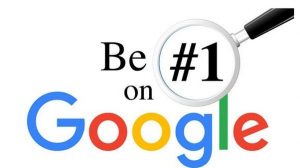
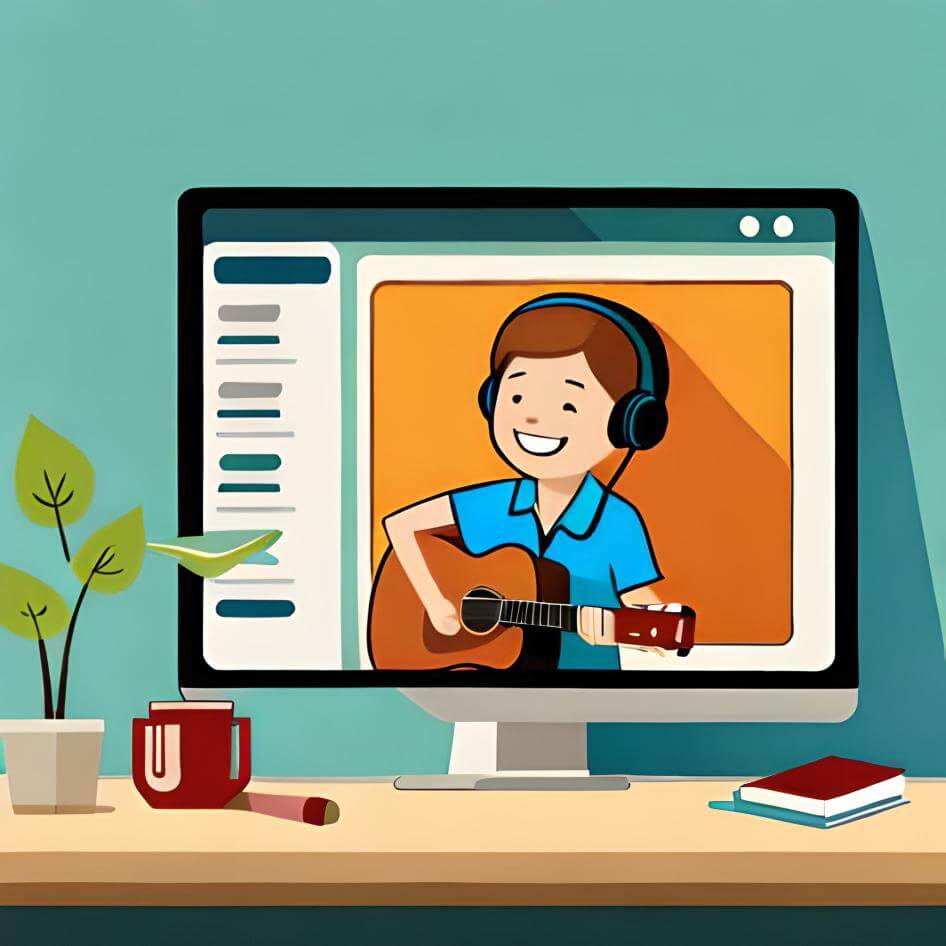
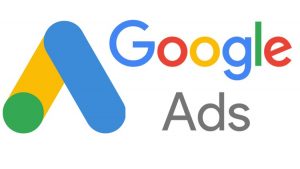
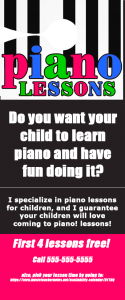
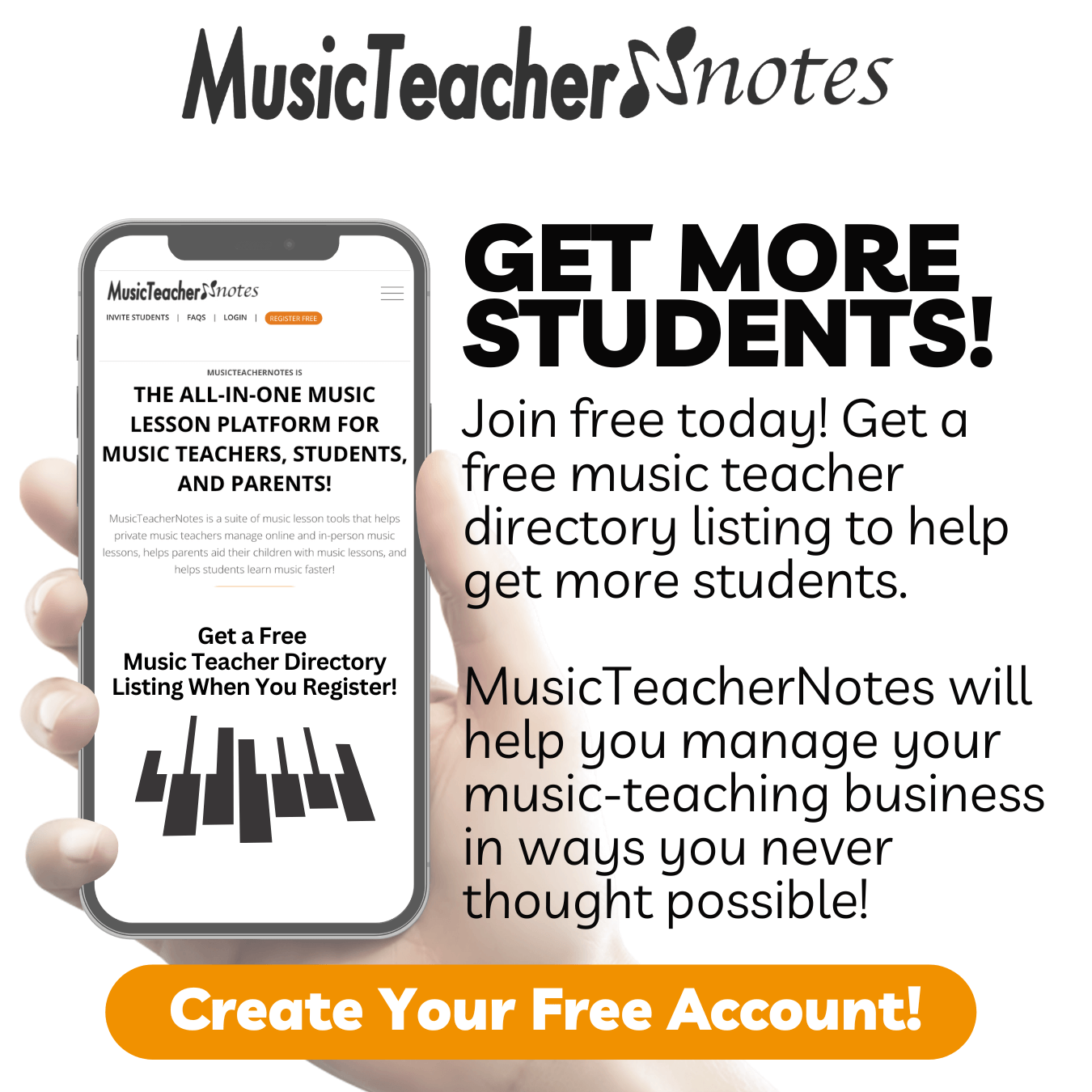
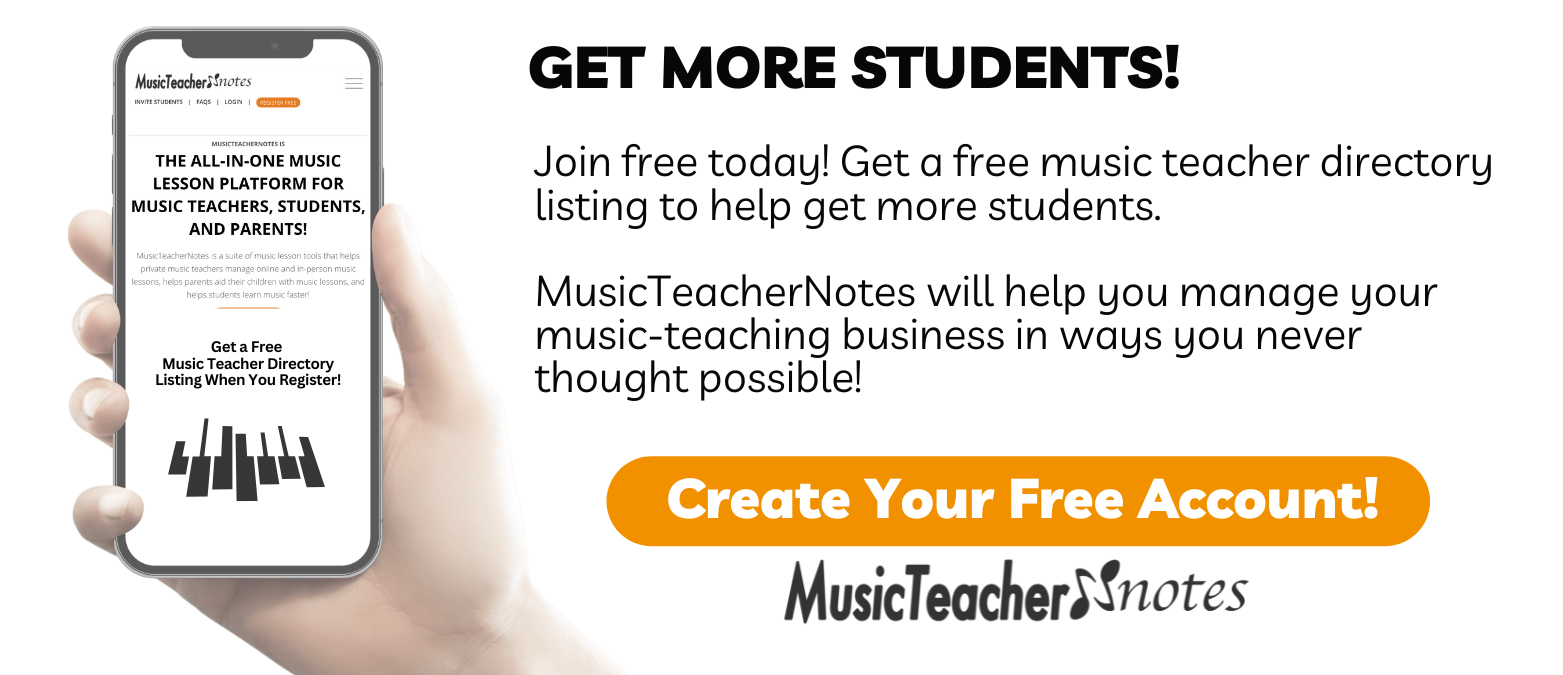
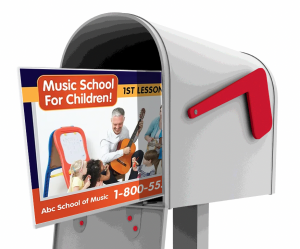





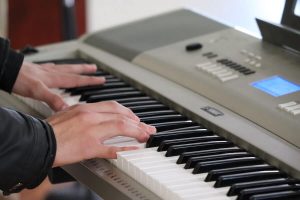
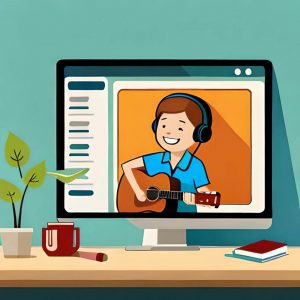 Do you want to get more students and grow your music teaching business?
Do you want to get more students and grow your music teaching business?